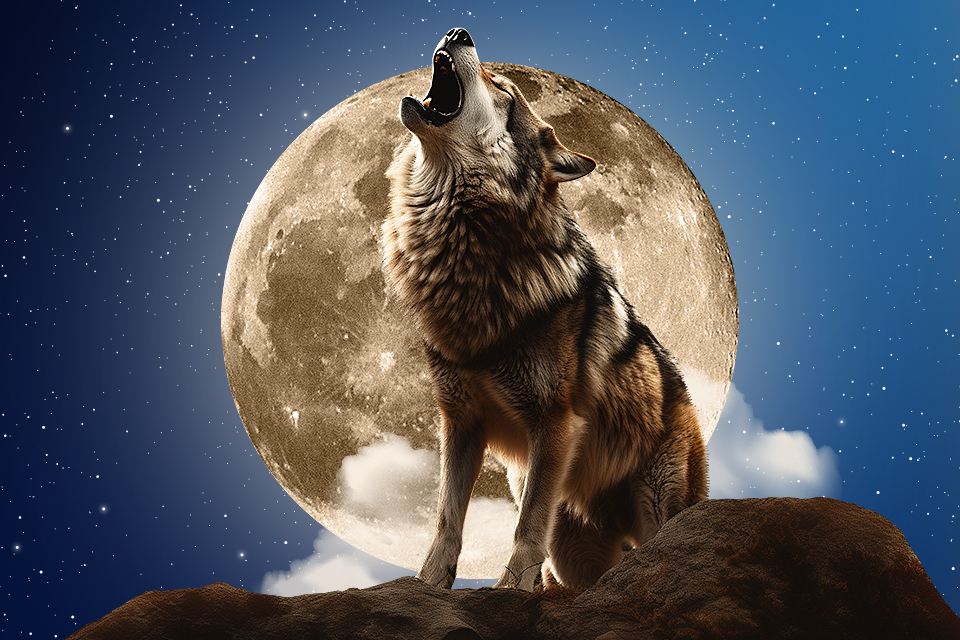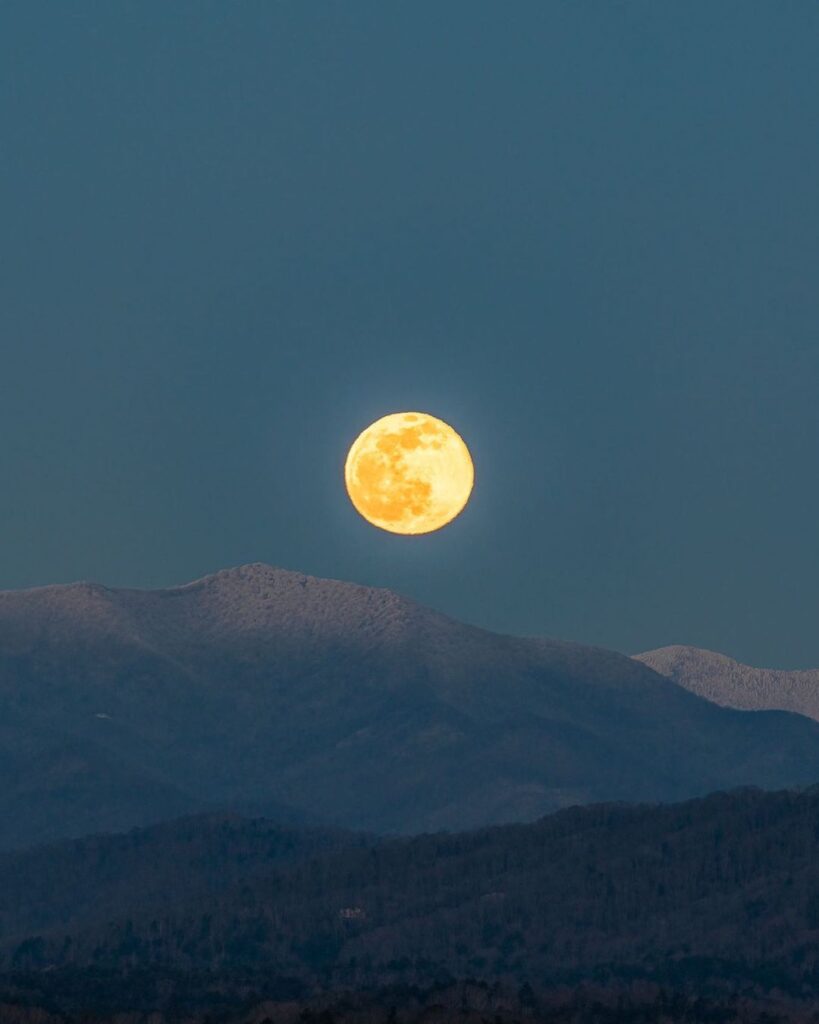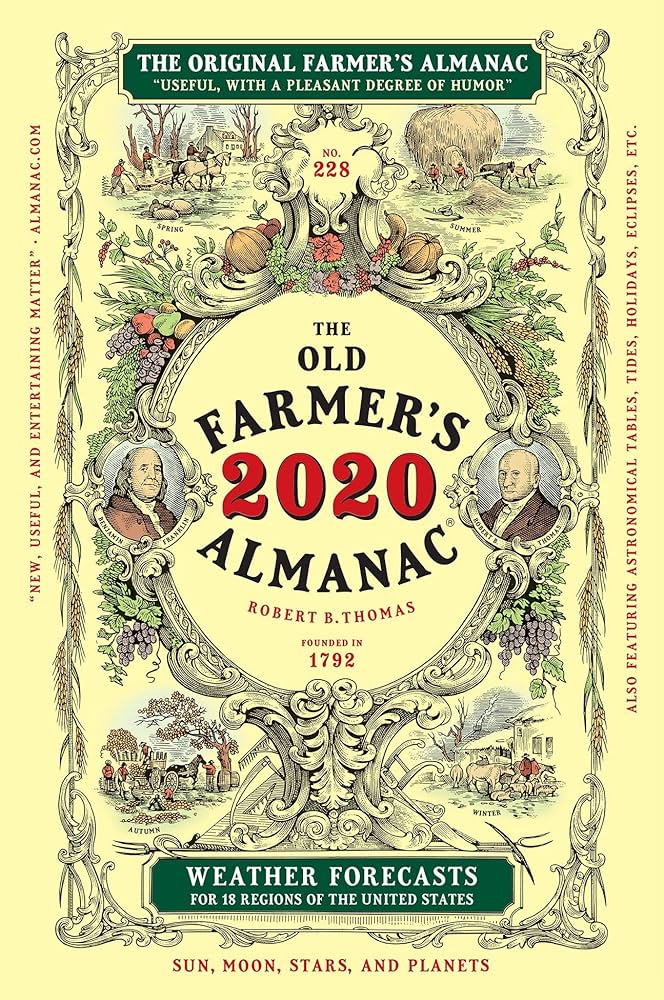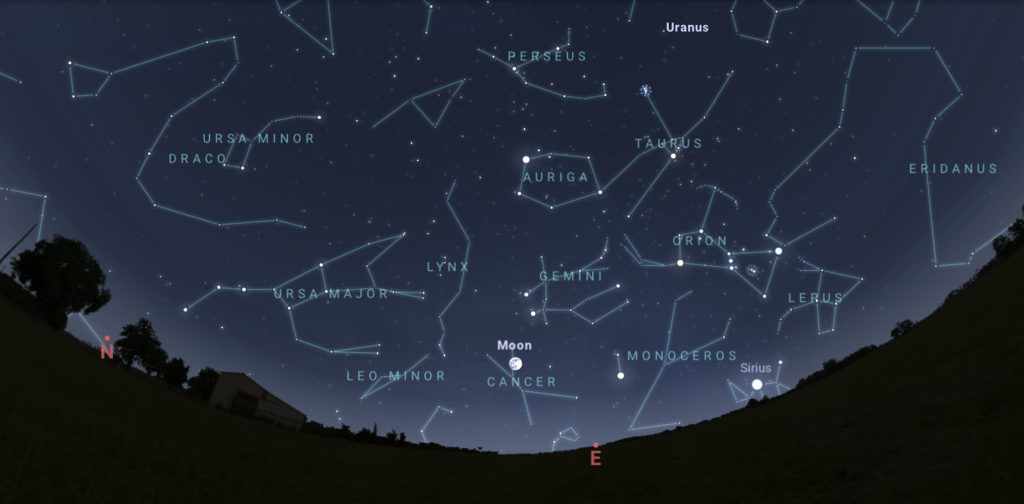The first full moon of the year is often called the “wolf” moon. In 2024, it falls on January 25. Nothing terrible will happen on this day. However, for those who want to know where this strange name came from, we have prepared a detailed explanation.

January full moon
January 25 will be the first full moon of 2024. In recent years, it has been increasingly called the “wolf” full moon. In this regard, articles appear in the media about what to expect or not to do on this day. In reality, though, you’re unlikely to notice any difference from any other day when the Moon turns completely around to face the Earth with its sunlit side. And this happens 12-13 times every year.
As for the name “Wolf Full Moon” or “Wolf Moon”, it came to us from the United States, where it has been actively used for many years. In general, it should be noted that in the United States, each full moon has its own name. Traditionally, it is believed that their source is the folklore of the indigenous peoples of North America.

As for the Wolf’s Full Moon specifically, its name is associated with the fact that wolves allegedly howl especially hard, or especially loudly, or restlessly at this time. In reality, however, these animals make these sounds whenever they want, as it is the main way they communicate over long distances.
Where did the name “Wolf Full Moon” come from?
In fact, the first source that mentions “Wolf Full Moon” and the rest of the names that are now used is the Old Farmer’s Almanac. This is an extremely venerable publication, founded in 1792. At that time, a significant part of the US population lived in rural areas, and it was intended for them. By the way, it is still being published today.
The almanac was published once a year and contained weather forecasts, simple astronomical data on the phase of the moon and the visibility of the stars, tables on when to plant certain plants, farming tips, recipes, and other important things in the life of farmers.
It was this magazine which in the 1930s began to use special names to describe each full moon, including “wolf” — and these names are still used today. The authors claimed that these were folk names and were formed among American farmers based on both traditions that came with their ancestors from Europe and those borrowed from indigenous people.

Now the “Indian” version is recognized as the main one. Although there are big problems with it. The fact is that among the indigenous peoples of North America, no one can point to one who would call it “wolf”. Mostly folklore names tend to be “cold” and “frost”.
As for the European origin, it is also questionable. After all, the Celtic peoples call it “Quiet moon” or “Stay at home moon”. And for the Germans, which include the Anglo-Saxons and numerous German colonies, it was “Full Moon after Yule,” that is, after the holiday celebrated during the winter solstice. And this is all assuming that all of these names survived centuries of cultural influence from Christianity.
So, most likely, the name “Wolf’s Full Moon”, like the others, is the folklore of American farmers. Or the publishers of the Old Farmer’s Almanac simply made them up. It was in the 1930s that the publication went through difficult times, conducted risky experiments, and almost closed. But the names eventually stuck.

What you can see on January 25
The full moon on January 25 will be absolutely ordinary. It will be neither a “supermoon” nor a “micromoon”. There will be no eclipse either. The moon will rise at 15:57 Kyiv time and set the next day at 8:09.
The exact moment of the fullest moon will be 19:54, although in fact the whole disk of our natural satellite will be visible for several days. At this moment, the Moon will be in the constellation of Cancer. The best time to observe it will be in the middle of the night, when it will be at its maximum height above the horizon.

